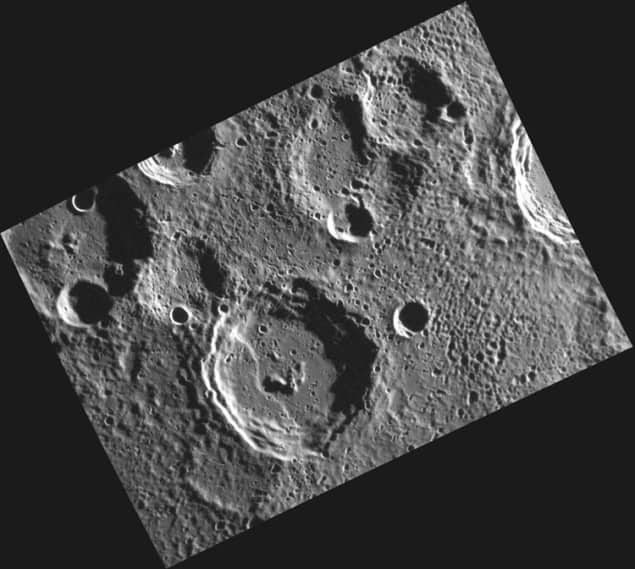Hamish Johnston discovers how companies are profiting from optics technology in areas as disparate as space science and cellular biology

Andor Technology and e2v are two firms that excel in the design and manufacture of optical sensors. While e2v has carved a niche in space science, Andor has made great strides in developing imaging systems for the biological sciences.
In 1996 the UK-based optoelectronics company e2v entered the space race when it created digital cameras for the Envisat mission of the European Space Agency (ESA). Envisat was launched in 2002 with two charge-coupled devices (CCDs) from e2v and since then the firm’s sensors have been launched aboard an impressive list of space missions. These include NASA’s Messenger mission to Mercury, which uses e2v’s sensors in its Mercury Dual Imaging System (MDIS).
Comprising a multispectral wide-angle camera and a monochrome narrow-angle camera, MDIS is used to map the surface of the planet in monochrome, colour and stereo. It has been used to acquire 1200 images during each of Messenger’s three fly-bys of the planet since the mission launched in 2004. In March Messenger began to orbit Mercury and e2v’s cameras supplied the first close-up images of the planet.
Beyond our solar system, much of what we know about planets orbiting stars other than the Sun (exoplanets) comes from e2v devices on ESA’s COROT and NASA’s Kepler satellites. Also, the latest dramatic images of the Sun from NASA’s STEREO mission were obtained in part using e2v’s CCD devices.
Founded in 1947 and based in Chelmsford, e2v is a publicly traded company with 1600 employees, a third of whom are scientists and engineers. The firm has annual sales of about £201m (€227m) and 13 major locations worldwide. The company first started making CCD sensors about 30 years ago, and according to Jean-Francois Bruyeres from the firm’s Space & Defence Imaging division, e2v specializes in customizing CCD technology for use in space. This involves removing nearly all of the semiconductor material from the back of the CCD device, allowing light to enter via the back and straight into the optically sensitive region.
Special coatings
The CCDs are also coated with different films, making them sensitive to light at different wavelengths from the near-infrared through the visible and ultraviolet up to soft X-rays. So where will the next images be coming from? Bruyeres says e2v has signed a major contract to supply 100 sensors for the ESA’s Gaia mission, which will launch in 2013. Gaia will study about a billion stars and also look for exoplanets.
Back on Earth, UK-based Andor Technology has created devices that allow scientists to watch the inner workings of living cells at a length scale of about 100 nm – which is not possible with conventional optical microscopes. Belfast-based Andor spun out of Queens University in 1989 and employs more than 200 people in 15 offices worldwide. It had a turnover of £42.7m in 2010. The firm makes more than 70 products, including its electron multiplying charge-coupled device (EMCCD) optical sensors. The EMCCDs can be used as part of a system that can resolve tiny features in living cells. It works by firing a beam of light at the boundary of two media with different indices of refraction – say a glass slide and water. The angle of incidence is chosen such that all of the light reflects back through the glass.
The electromagnetic field of the reflected light extends about 100 nm into the water, where its intensity decays exponentially. This “evanescent” light forms the basis of total internal reflection fluorescence (TIRF) microscopy. This evanescent light penetrates a very short distance into a single-cell organism placed on the glass slide. Organelles within the cell are labelled using special fluorescent molecules that emit light when bathed in the evanescent light. The fluorescent light can be detected some distance away using a microscope. As a result, the technique can be used to make high-spatial-resolution studies of the movement of organelles.
The fluorescent light is extremely dim and is therefore very difficult to pick out from background light and noise. Andor makes the technique possible thanks to its new iXon3 EMCCD camera. A CCD works by converting light to electrical charge. In an EMCCD the amount of charge is multiplied over several stages to enhance very weak signals. Andor and e2v have enjoyed success by pushing the limits of optical sensors in very different directions – showing how important such devices have become across a broad range of science and technology.



